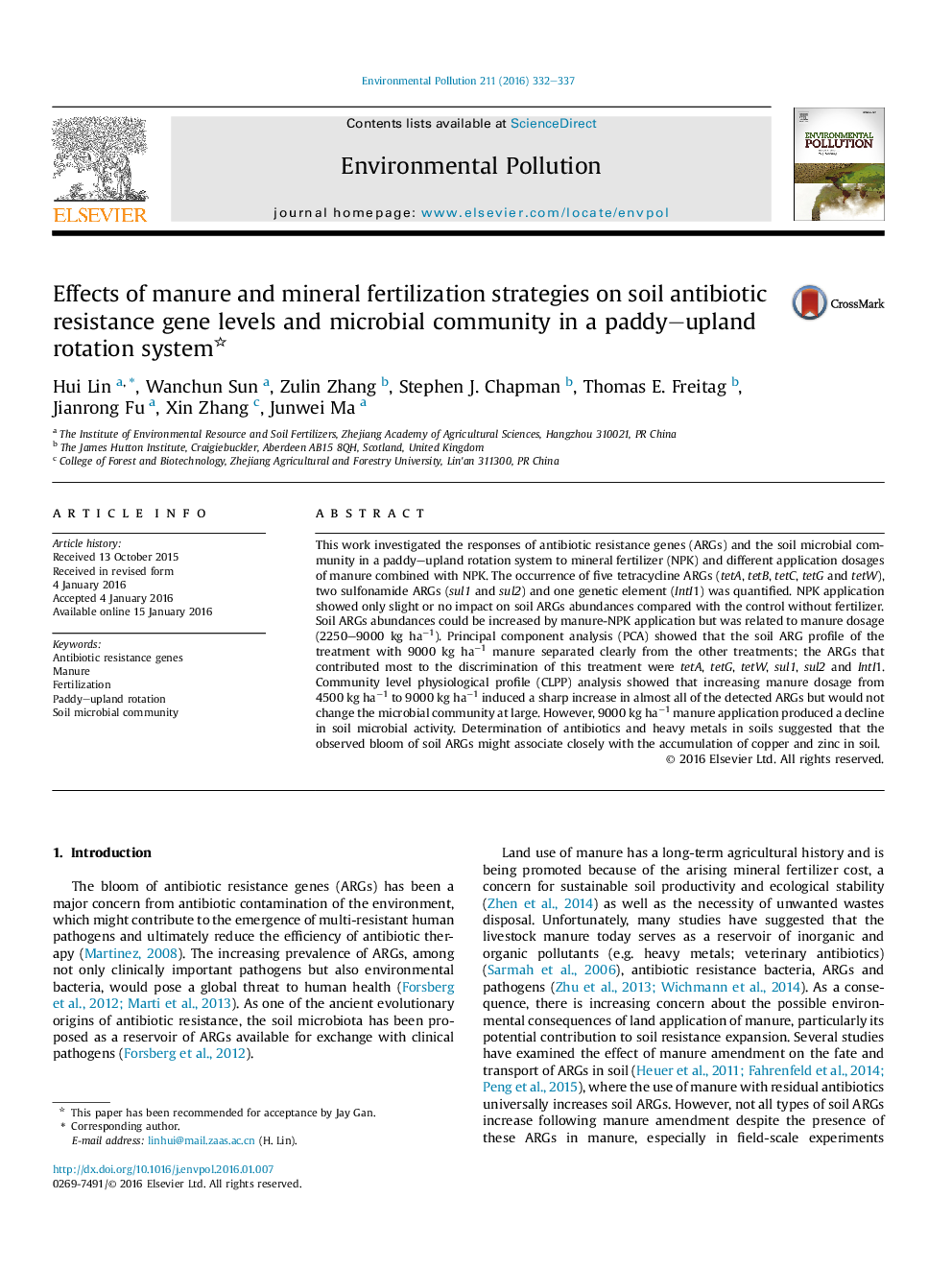| کد مقاله | کد نشریه | سال انتشار | مقاله انگلیسی | نسخه تمام متن |
|---|---|---|---|---|
| 6315534 | 1619162 | 2016 | 6 صفحه PDF | دانلود رایگان |
- The occurrence of ten ARGs in a manure and a paddy soil from China was tested.
- The fate of ARGs in soil varied between ARG types and fertilization strategies.
- The increase in soil ARG caused by manure-NPK fertilization was manure dosage-related.
- Excessive manure greatly increased soil ARGs and inhibited soil microbial activity.
- Cu and Zn levels in soils associated closely with the observed soil ARGs bloom.
This work investigated the responses of antibiotic resistance genes (ARGs) and the soil microbial community in a paddy-upland rotation system to mineral fertilizer (NPK) and different application dosages of manure combined with NPK. The occurrence of five tetracycline ARGs (tetA, tetB, tetC, tetG and tetW), two sulfonamide ARGs (sul1 and sul2) and one genetic element (IntI1) was quantified. NPK application showed only slight or no impact on soil ARGs abundances compared with the control without fertilizer. Soil ARGs abundances could be increased by manure-NPK application but was related to manure dosage (2250-9000 kg haâ1). Principal component analysis (PCA) showed that the soil ARG profile of the treatment with 9000 kg haâ1 manure separated clearly from the other treatments; the ARGs that contributed most to the discrimination of this treatment were tetA, tetG, tetW, sul1, sul2 and IntI1. Community level physiological profile (CLPP) analysis showed that increasing manure dosage from 4500 kg haâ1 to 9000 kg haâ1 induced a sharp increase in almost all of the detected ARGs but would not change the microbial community at large. However, 9000 kg haâ1 manure application produced a decline in soil microbial activity. Determination of antibiotics and heavy metals in soils suggested that the observed bloom of soil ARGs might associate closely with the accumulation of copper and zinc in soil.
Journal: Environmental Pollution - Volume 211, April 2016, Pages 332-337
